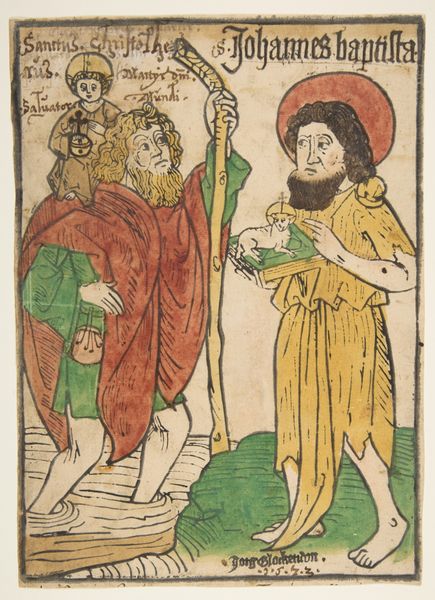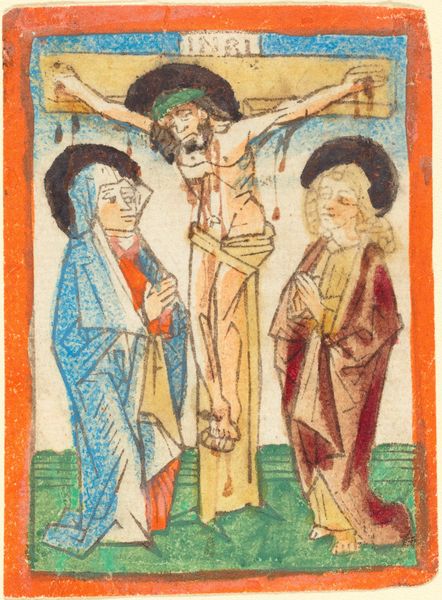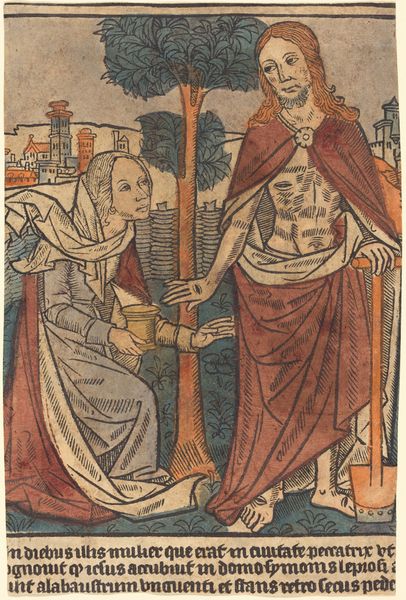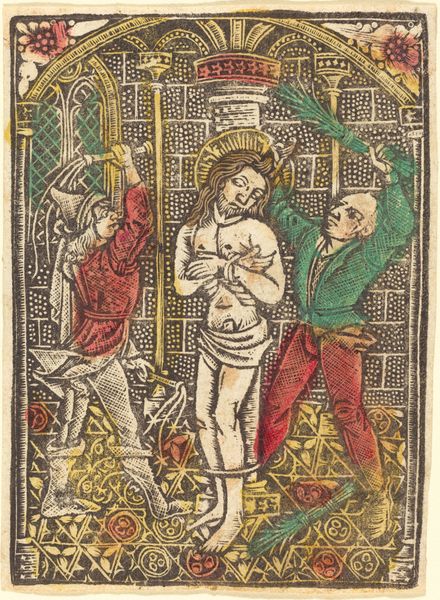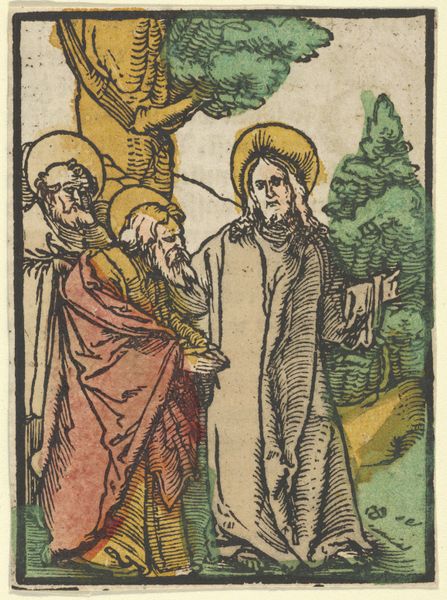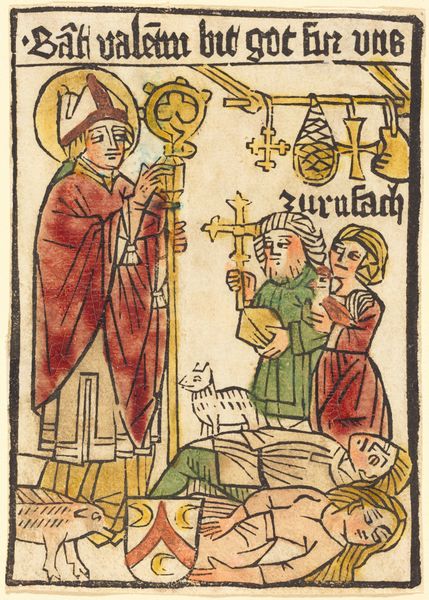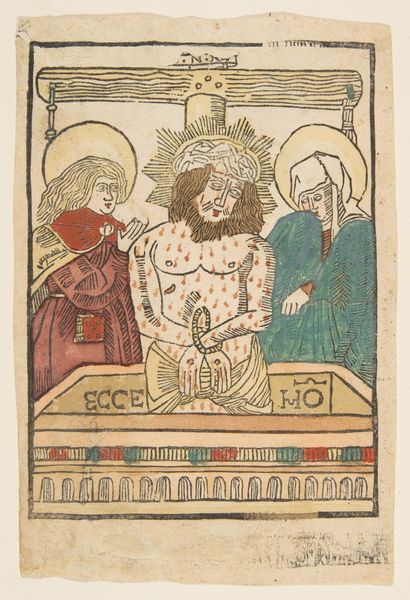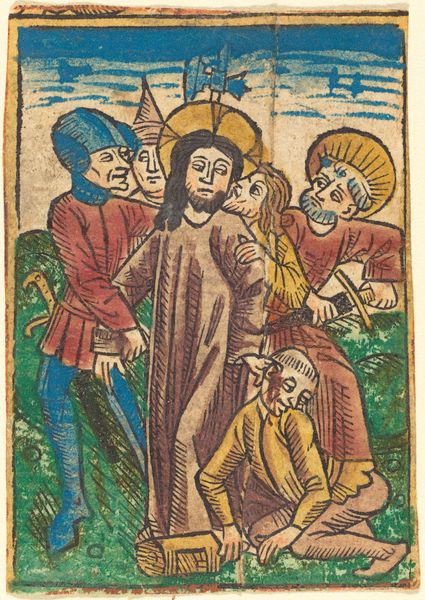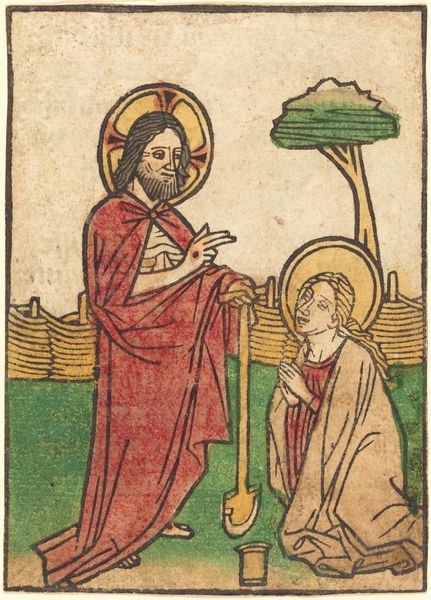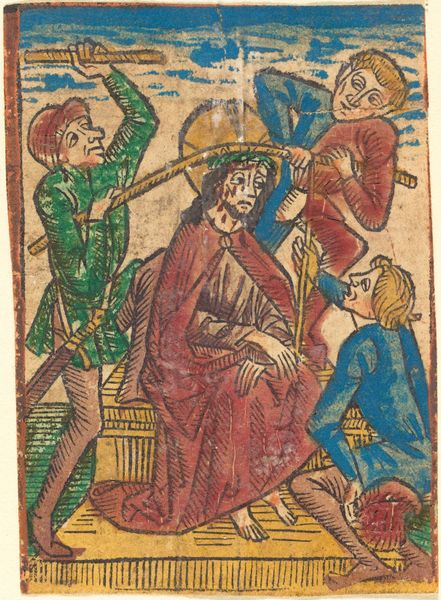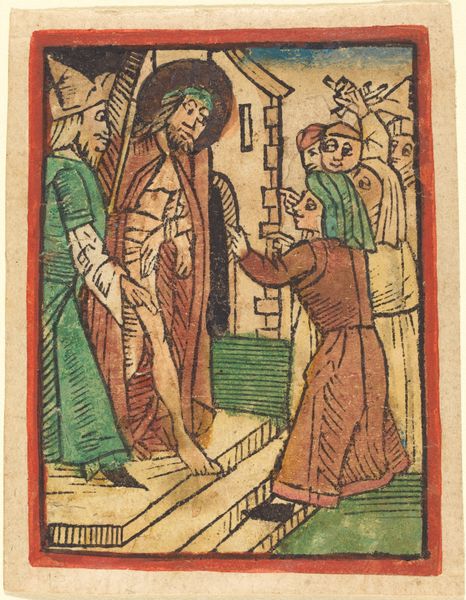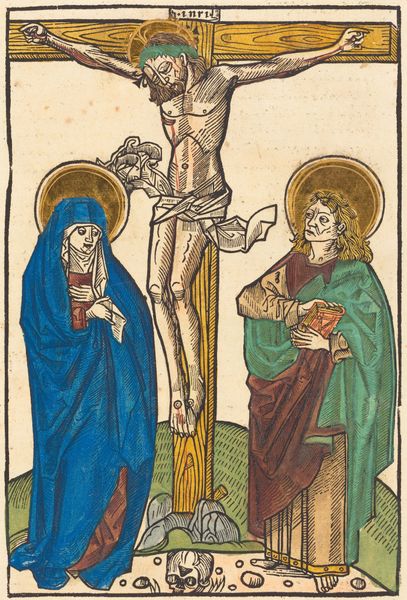
drawing, print, woodcut
#
drawing
#
medieval
# print
#
figuration
#
woodcut
#
history-painting
Dimensions: sheet: 7 15/16 x 5 5/16 in. (20.2 x 13.5 cm)
Copyright: Public Domain
Curator: Here we have a fascinating 15th-century woodcut, "St. Gregory and St. Sebastian", currently residing at the Metropolitan Museum of Art. Editor: It's quite striking, especially the stark contrast in depiction between the composed St. Gregory and the agonized St. Sebastian. The lines are bold, almost crude. Curator: Exactly. The work hinges on that duality. Consider the composition; two figures neatly bisected within the frame. On the left, St. Gregory, the Pope, rendered in a deep crimson robe, stands rigidly, holding a book. A study in perpendicular lines. Editor: While to the right, we see St. Sebastian, bound, pierced with arrows. The artist uses diagonals to convey his pain and vulnerability; look at the angle of his head and the way his body twists. There's an expressive, though somewhat unsettling, lack of detail in his features. Curator: Indeed. This relative flatness, along with the limited color palette, are characteristic of early woodcut prints. They weren't aiming for naturalism. Editor: Certainly. Given that it’s a print meant for wide distribution, I suspect this served as both a devotional object and a form of historical record. Images of saints and martyrs reminded the faithful of proper Christian behavior and the consequences of heresy, amid complex sociopolitical issues. Curator: Precisely. The woodcut’s lines almost operate as signs themselves, directing us toward these symbolic registers of the earthly and spiritual worlds, and to the artist’s rendering of divine order and mortal suffering. Editor: A sobering piece that illustrates how art functioned not merely as aesthetic object, but as a complex artifact embedded in social, religious, and historical forces. Curator: Yes, a rich testament to the symbiosis of graphic form and early print culture.
Comments
No comments
Be the first to comment and join the conversation on the ultimate creative platform.
